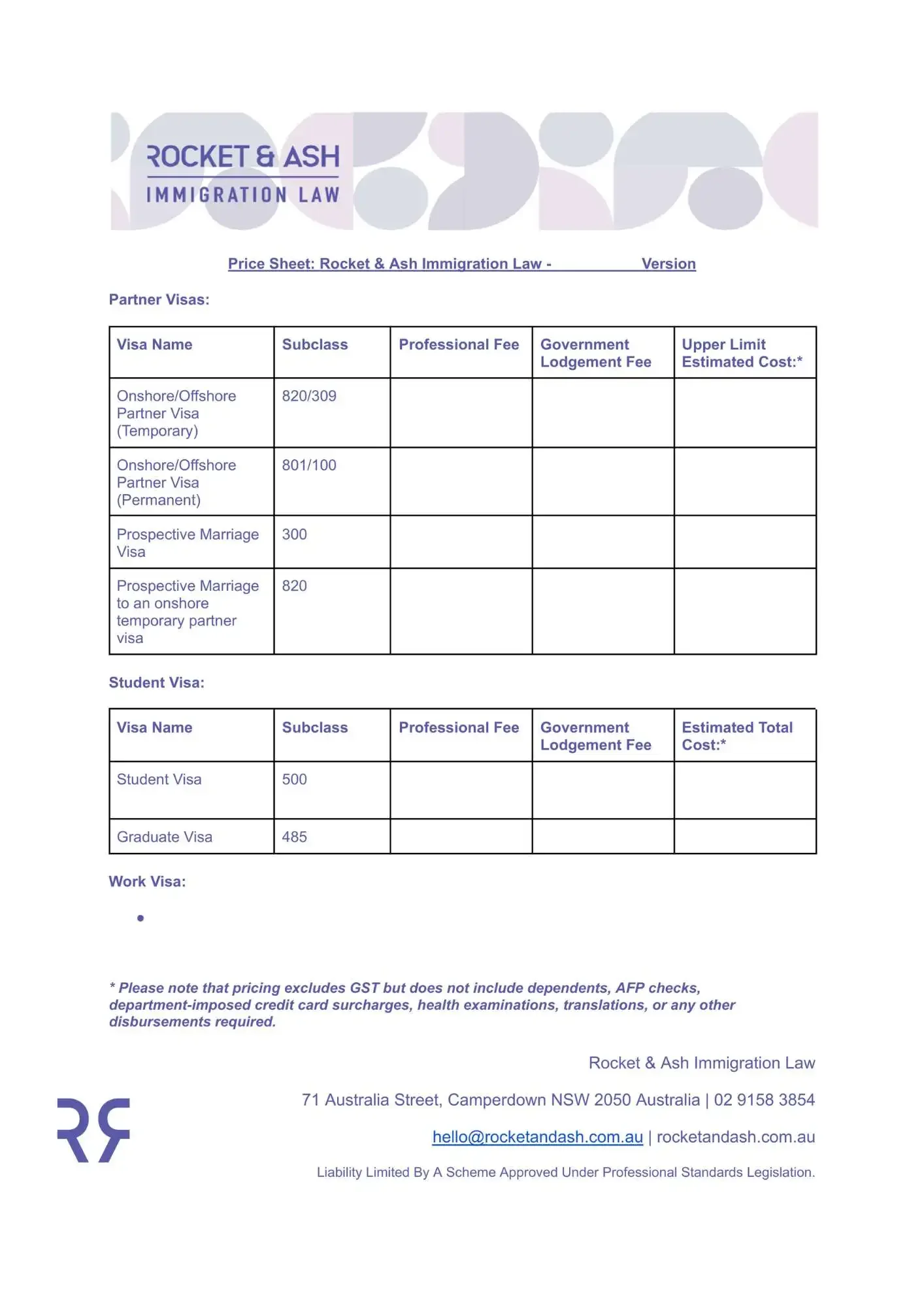The Partner Visa Subclass 309 and Subclass 820 are both part of Australia's partner visa program, designed for individuals who are in a relationship with an Australian citizen, Australian permanent resident, or eligible New Zealand citizen. While they serve a similar purpose, the key difference between the two lies in the location of the visa applicant at the time of application and the visa grant process.
Subclass 309: Partner (Provisional) Visa
- Location at Time of Application: The Subclass 309 visa is for applicants who are outside Australia at the time of applying, i.e., lodgement. It is the first step towards a permanent Partner visa (Subclass 100).
- Process: After applying for the Subclass 309 visa, the applicant can be either inside or outside of Australia when the Department makes a decision on the temporary visa application.
- Must wait outside Australia until the visa is granted, unless they are able to secure another visa to visit Australia.
- Following the grant of the Subclass 309 visa, the visa holder can move to Australia and live with their partner. This visa is provisional and is a pathway to permanent residency through the Subclass 100 visa, which can generally be applied for two years after lodging the Subclass 309 visa application.
- Visa Duration: It is a temporary visa until the permanent Partner visa (Subclass 100) is processed and granted.
Subclass 820 - Partner (Temporary) Visa
- Location at Time of Application: The Subclass 820 visa is for applicants who are already in Australia at the time of applying. It is the first step towards a permanent Partner visa (Subclass 801).
- Process: Applicants apply for the Subclass 820 visa while in Australia and can remain in Australia on a bridging visa if their current visa expires before the Subclass 820 visa is granted. Similar to the Subclass 309, the Subclass 820 visa is temporary and leads to the Subclass 801 Permanent Partner Visa, for which the applicant can apply after a certain period of holding the Subclass 820 visa.
- Visa Duration: It grants temporary residency with the opportunity to apply for permanent residency through the Subclass 801 visa after meeting eligibility criteria, including the relationship and time requirements.
Commonalities
- Both visas require the applicant to be in a genuine and ongoing relationship with their sponsor.
- Both have a two-stage process towards permanent residency, requiring initial temporary visa application and subsequent permanent visa application.
- The requirements for both visas regarding the nature of the relationship, health, character, and mutual commitment are similar.
In summary, the primary difference between the two visas is based on the applicant's location when applying for the visa. The Subclass 309 visa is for those outside Australia (at time of lodgement), while the Subclass 820 is for those already in Australia. Both visas lead to a second stage where the applicant can obtain permanent residency.
The main benefit of the 820 is that the applicant is able to stay in Australia and usually have full work rights while on a Bridging Visa A (BVA), whereas the 309 is an offshore partner visa that does allow the applicant to visit Australia, but the visits are temporary.
About Rocket & Ash Immigration Law
At Rocket & Ash Immigration Law, we specialise in helping partners, graduates, and professionals navigate the complexities of Australian immigration law. Our expertise in visa applications ensures that you receive tailored advice and support throughout your immigration journey.
If you require assistance with your partner visa application or have any other immigration-related queries, our experienced team can help.
Please book a free 15 minute chat with our team if you have further questions.
Written by Ines Jusufspahic, LPN: 5511366
This article does not constitute legal advice or create an attorney-client relationship. For up-to-date information, please consult an immigration professional.



